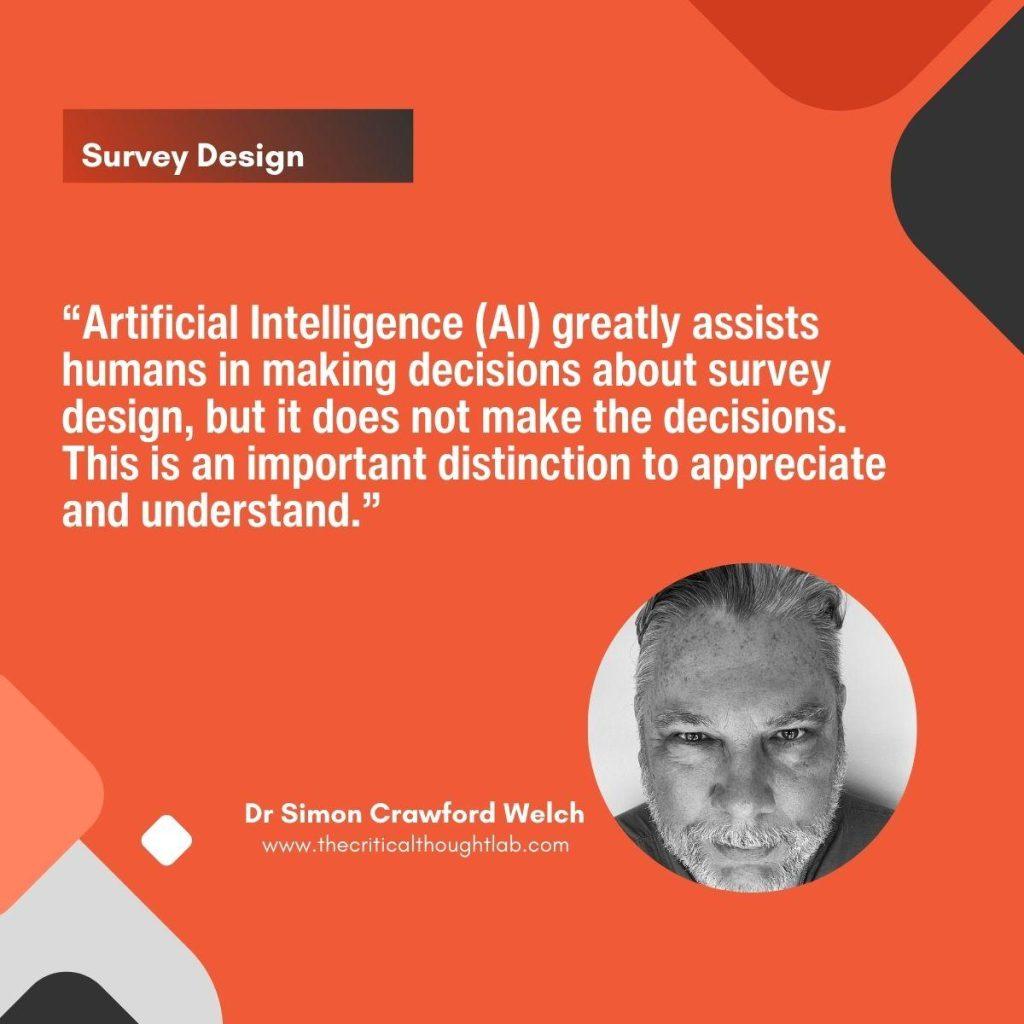By Dr. Simon Crawford-Welch
Founder, The Critical Thought Lab
Follow me at www.linkedin.com/in/simoncrawfordwelch

The field of survey research is evolving so fast that the chase for the purest (i.e., valid & reliable) data can often feel like hunting for a needle in a haystack. Artificial Intelligence (AI) and Machine Learning (ML) are proving to be the super-powered magnets we didn’t know we needed. The days of sifting through data the old-fashioned way might soon be a thing of the past, thanks to these smart technologies reshaping the landscape of survey design.
Smart Routing: Not Your Grandma’s GPS’s
Gone are the days when every respondent had to trudge through the same set of questions, regardless of relevance. AI-enhanced survey tools bring to the table something akin to ‘smart routing,’ a sophisticated cousin of your car’s GPS system. This technology dynamically alters the survey pathway for each respondent based on their previous answers. Imagine a survey that reads the room—or, more accurately, reads the respondent.
“It’s like having a conversation where the survey actually listens to you and responds intelligently, rather than just nodding along.”
This not only keeps the survey relevant but also prevents respondent fatigue by avoiding unnecessary questions.
Adaptive Surveys: The Chameleons of Questionnaires
Adaptive surveys, adjusted in real-time by AI, ensure that the questions suit the unique characteristics of each respondent. This could mean altering the difficulty level, tweaking the language, or diving deeper based on how the respondent is interacting with the survey. It’s akin to a chameleon changing colors to keep things engaging and relevant. This customization helps in gathering more precise data and, more importantly, in keeping respondents engaged enough to hit ‘submit’ rather than ‘close tab.’
Sentiment Analysis: Decoding the Unsaid
Thanks to advances in natural language processing (NLP), AI tools are now Sherlock Holmes of open-ended responses. They can detect sentiments, sift through text, and unearth underlying themes that might skip the naked eye. This means that the qualitative data, often a beast to tame, becomes not only manageable but a gold mine of insights.
The Efficiency Machine: Automation in Survey Design
From data cleaning to preliminary analysis, ML models are the new interns that never sleep. They can automate the drudgery out of the survey process, significantly cutting down the time it takes to go from survey closure to insights. Moreover, they help craft surveys by recommending questions tailored to the survey’s goals and the targeted demographic’s previous responses. Each survey iteration becomes more refined, much like a fine wine, but without the waiting.
Predictive Analytics: Crystal Ball of Survey Outcomes
Using historical data, AI doesn’t just predict the weather but the outcomes of your survey. This foresight helps researchers anticipate response rates, pinpoint potential areas of non-response, and tweak methodologies in advance. It’s like having a crystal ball, only it’s backed by data and algorithms instead of mystic powers.
Personal Touch: Customization at Its Best
We often hear that surveys seem so impersonal and generic. The use of AI in surveys can offer a more personalized interaction. By leveraging data from previous interactions, AI can tailor communications and follow-up surveys, enhancing response rates and data quality over time.
Wrapping Up
Integrating AI and ML into survey design isn’t just about keeping up with the tech trends. It’s about transforming the way we gather and analyze data, leading to smarter business decisions and more effective strategies. As these technologies continue to evolve, their impact on survey methodologies is set to redefine the boundaries of what surveys can achieve. So, next time you design a survey, remember: you’re not just asking questions; you’re really conducting an orchestra of AI and ML, to deliver a symphony of insightful data.



